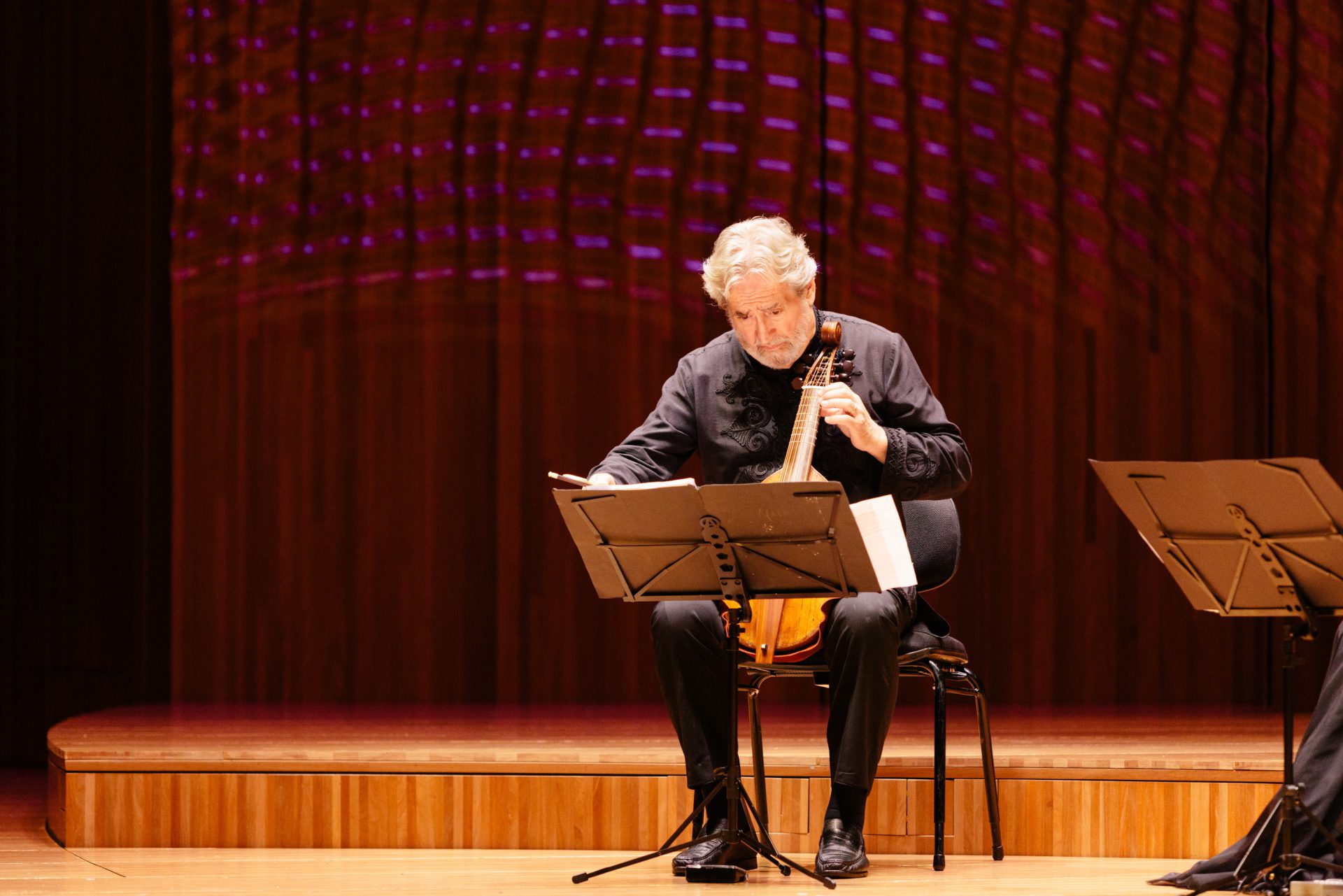Jordi Savall’s quiet celebrity in the early music scene was won by years of meticulous scholarship and a voluminous output of first-class recordings. But that is to say nothing of his moving live performances that bring viol music to life.
The concert began on a stately note with Innocenti Alberti’s Pavin of Albarti. Next was one of Christopher Tye’s many In Nomines, a form of English polyphonic consort music grounded on a section of the Benedictus plainchant that was taken up, more popularly, by Bull, Byrd and other virginalists. Tye’s Crye seized upon that most Monteverdian of techniques – the use of the tremolo to depict anguish – and wove it into a tapestry of voices. Hespèrion XXI performed it with such unity as to make it like a wave washing over the audience, and the shifted metre gave a colourful dance-like quality.
The rhetorical tactic of repetition also featured in Gervaise’s Pavane de la Guerre, which begins with something of a percussive battlecry before a succession of repetitive notes imitating the bugle dominate. Gibbons’ In Nomine a 4 features a series of falling fourths, setting the melancholic theme, and evolves into an aural hotchpot in which Savall subtly glistened on the tenor viol.
Like Prospero, Savall woke us from this meditation with a sprightly start to Dowland’s King of Denmark’s Galliard. But with Trabaci’s Durezze e ligature we return immediately to the more melancholic strain of the late Renaissance. It opens with a series of jarring augmented chords that surprise the audience here and there.
Canzoni are lighter fare, but Guami’s Canzon Sopra la Battaglia a 4 (1601) is interrupted by battle-like frenzies with remarkable improvised flourishes by Savall and toe-tapping changes in metre. We return to the heavier soundworld of Renaissance polyphony with John Ward’s Fantasia No 4. The ensemble increases in momentum in stretto, as Savall, then Phillipe Pierlot and the remaining viols speak in rapid succession. It has all the contrapuntal density of a Gibbons. The remaining anonymous pieces also feature delightful dialogues between Savall and Pierlot. The second anonymous piece, the Bouree d’Avignonez is worthy of special mention. Its tune was popularised by Praetorius’ collection of Renaissance dances, Terpsichore, and is a veritable earworm. Just as the audience became attuned to its dance-like quality, Lixsania Fernandez leaves her tenor viol for centre-stage, and dances vibrantly to the tune.
After the intermission came a succession of lesser-known composers – Brade, Ferrabosco and de Heredia. Heredia’s Tiento de Batalla featured a lively discourse between Savall and Lorenz Duftschmid on bass viol as well. Call-and-answer also formed a large part of Scheidt’s Galliard Battaglia. There was also masterful percussion by David Mayoral. The role of percussion in Renaissance music is often underestimated. But quite often it ‘makes’ the piece; and much Renaissance music (think the curtal) has a deliberately-percussive, almost bombastic, quality. Mayoral’s playing was at all times tasteful and never over-powering.
Charpentier’s plaintive French rhythms sets the scene perfectly for the selections from Bach’s Art of Fugue. First, naturally, was Contrapunctus I which unfurled gradually. Second, for contrast, was Contrapunctus IX with its running passages. It is a wonder how Savall manages to negotiate these passages at such speed on such a small fretboard without fault. It is also a wonder how clearly the voices emerged, despite the venue (on the whole, it would seem that a more fitting venue for a viol consort might have been the more intimate Recital Hall). Cabanilles’ Corrente Italiana begins with a delightful introduction by Enrike Solinis on theorbo, before the courante element kicks in midway.
The applause at the end was so rapturous that it merited three encores. The first was Le Ballet Carousel, which was a delightfully whimsical showpiece written for the young Louis XIII, here featuring Mayoral on horse-like percussion. Second was a song unearthed from an old codex that commemorates Christ’s death. Last was Cachua Serenita, an upbeat piece that was much like a passacaglia. Fernandez treated the audience to one last dance, which was faithful to the piece’s origins as a Quechuan dance and rounded off what was by all accounts a thoughtfully-curated concert program.
